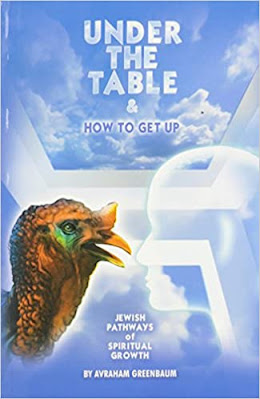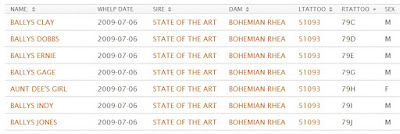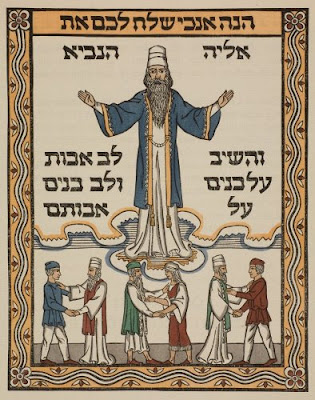Building Sukkot: Now that Yom Kippur and the Days of Awe have passed, Jews all over the world turn to rejoicing.
We complete building our sukkot (booths), round up our lulav and etrog (the four species), and wait with eager anticipation for the Festival of Sukkot - the Season of Our Joy - to begin.
We recite the Full Hallel for all the days of the holiday, for our joy is complete. Yet we eat meals in the sukkah - a rickety, temporary dwelling.
Abq Jew hears you ask
Rabbi Louis Jacobs explained in a My Jewish Learning article:
The sukkah is called a “temporal dwelling,” as distinct from the “permanent dwelling” in which people normally live.
On the basis of this the idea has been read into the sukkah of a symbolic surrender of too-close an attachment to material things. The Jew leaves his house to stay in the sukkah where he enjoys divine protection.
Judaism does not frown on material possessions, if these are honestly acquired, but, by leaving his home to stay in the sukkah, the Jew declares that it is the spiritual side of human existence that brings true joy into life.
Here is Abq Jew's view:
all our dwellings are temporary.
 |
| Flames from the Glass Fire consume the Black Rock Inn, late Sunday, Sept. 27, 2020, in St. Helena, Calif. (AP Photo/Noah Berger) |
we Jews rejoice in our sukkot during our festival.
If you need help building your sukkah, Abq Jew is happy to provide advice from Rebbetzin Rivka Leah Zelwig (see Building Your Sukkah)!
All it takes is unionized construction labor, unrestricted financial resources for materials, a rented storage locker (or a three car garage), a degree in Exterior Design, hours of fervent prayer, and a mechona. Or a kit.
In any (Jewish) event, as our beloved Dr Seuss explains - there are rules!
- Maimonides (RMBM) Mishne Torah, Hilchot Sukkah, Chapter 4, Section 1. The minimum height of a Sukkah is 10 tepachim. A tepach is a measure of the width of the four fingers of one’s hand. My hand is 3 ¼ inches wide for a minimum Sukkah height of 32 ½ inches. The minimum allowable width is 7 tepachim by 7 tepachim. This would result in a Sukkah of 22 ¾ inches by 22 ¾ inches.
- The maximum height is 20 Amot. An Amah is the length from the elbow to the tip of the middle finger. My Amah is 15 ½ inches for a maximum height of 25 feet. Others say that 30 feet is the maximum.
- According to RMBM the Sukkah can be built to a width of several miles. Shulchan Aruch also says there is no limit on the size of the width.
- RMBM Hilchot Sukkah Chapter 4, Section 6.
- RMBM Hilchot Sukkah Chapter 4, Section 11. RMBM states that one may construct a Sukkah by wedging poles in the four corners of the roof and suspending scakh from the poles. The walls of the building underneath are considered to reach upward to the edge of the scakh.
- RMBM Hilchot Sukkah Chapter 4, Section 8-10 discusses the ins and outs of building your Sukkah in an alley or passageway
- There is a location referred to in the Talmud called Ashtarot Karnayim. According to the discussion there are two hills, with a valley in between where the Sun does not reach. Talmud Bavli, Sukkot 2a. Thanks to the miracle of the Internet, Rabbi Joshua Strulowitz (of Congregation Adath Israel in San Francisco) commented on this line, which now reads correctly. The halacha is that you can build your Sukkah in Ashtarot Karnayim, or other places where the sun does not reach the Sukkah because of artificial impediments, provided that if the impediment were removed, shade from the sun would now come through the scakh. Who is wise? One who learns from all! (The original line is now in parenthesis and grayed out)
- RMBM Hilchot Sukkah Chapter 4, Section 6. You can go into a Sukkah built on a wagon or a ship even on Yom Tov.
- RMBM Hilchot Sukkah Chapter 4, Section 6. OK, RMBM says a camel but dragon rhymes with wagon a lot better, don’t you agree. Anyway, RMBM says you can build your Sukkah on a wagon or in the crown of a tree, but you can’t go into it on Yom Tov. There is a general rule against riding a beast or ascending into the crown of a tree on Yom Tov.
- Chapter 5 deals with the rules for the scakh. Basically, you can use that which has grown from the ground, and is completely detached from the ground. So, for example, you cannot bend the branches of a tree over the Sukkah to form the scakh. But you can cut the branches from a tree and use them as scakh.
- This would be a violation of the rule cited in the prior footnote.
- Shulchan Aruch, Hilchot Sukkah, Perek 636, Section 1 The Sukkah should not be built sooner than 30 days before the Hag. However, if the structure is built prior to 30 days, as long as something new is added within the 30 days, the Sukkah is kosher.
- Of course it’s a well known rule that you must sit in the shade from the roof of the Sukkah and not in the shade that may be cast by the walls. It seems that this might affect the height of the walls, depending on the longitude of the location where you are building your Sukkah.
- Traditionally, women, servants and minors are patur from the Mitzvah of Sukkah. In our day we hope we know better than to read out half the Jewish people from the observance of Mitzvot. Of course, that’s just a personal opinion of the author.
- RMBM ibid Chapter 6, Section 6 explains that you should eat, drink and live in the Sukkah for the 7 days as you live in your own home. One should not even take a nap outside of the Sukkah.
- RMBM ibid, Section 10 If it rains one should go into the house. How does one know if it is raining hard enough? If sufficient raindrops fall through the scakh and into the food so that the food is spoiled – go inside!















































